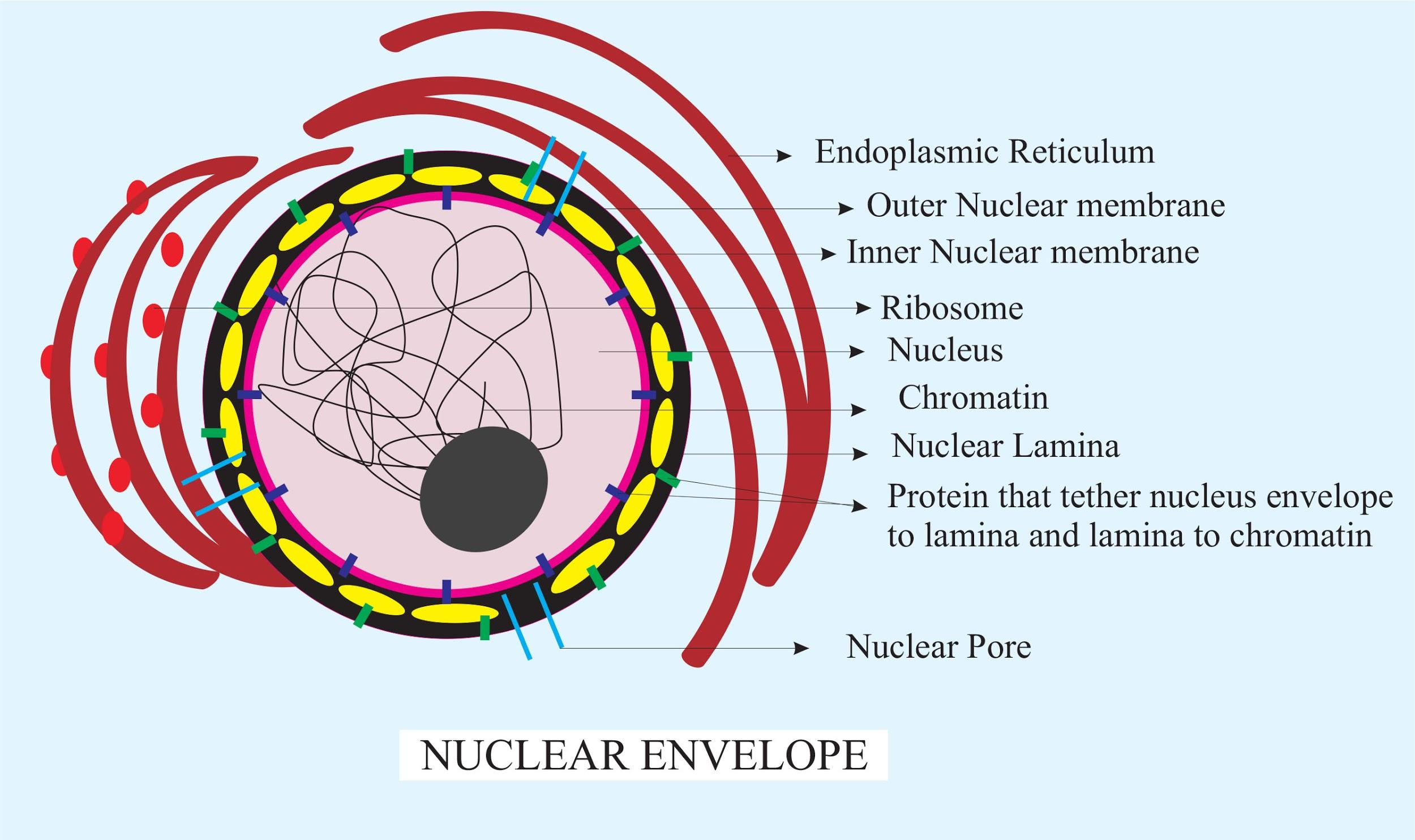
What is the significance of pores present in the nuclear membrane.
Answer
481.8k+ views
Hint: Nucleus contains ribosomes that help in protein synthesis. The synthesized proteins enter into the cytoplasm via specific pores.
Complete answer:
The nucleus in both eukaryotes and prokaryotes is covered with a membrane called nuclear membrane or nuclear envelope. It is a double membrane layer consisting of a perinuclear space of about 10 to 50 nanometers. It forms a barrier between the nucleus and cytoplasm materials. The outer membrane usually remains continuous with the endoplasmic reticulum that contains ribosomes i.e rough endoplasmic reticulum. The nuclear envelope is interrupted by minute pores in a number of places. These pores are formed by the fusion of its two membranes. These pores are used in the passage of RNA and protein molecules from the nucleus to the cytoplasm and allow RNA, proteins, carbohydrates, DNA polymerase, and laminins from the cytoplasm to the nucleus. smaller molecules are easily diffused from the nuclear pores whereas large molecules are recognized by specific signal sequences called nucleoporins that help them to pass through the nuclear pores. The diameter of the nuclear pore complex is about 120nanometers and the nuclear pore channel diameter ranges from 5.2nm to 10.7nm. Multiple protein complexes are seen in nuclear pores which are made into multiple copies.
Additional Information: - Nucleus was discovered by Robert Brown in 1831. It is one of the most important cell organelles that contain genetic material in the form of highly coiled structures called chromatin.
- The nuclear matrix or nucleoplasm has nucleolus and chromatin. During protein synthesis, large and numerous nucleoli are present in the nucleus.
Note: Normally, there is only one nucleus per cell but in some cells, more than one nucleus is seen it is called a syncytium. Examples: skeletal muscle
In some cells, the nucleus is completely absent, for example, human red blood cells.

Complete answer:
The nucleus in both eukaryotes and prokaryotes is covered with a membrane called nuclear membrane or nuclear envelope. It is a double membrane layer consisting of a perinuclear space of about 10 to 50 nanometers. It forms a barrier between the nucleus and cytoplasm materials. The outer membrane usually remains continuous with the endoplasmic reticulum that contains ribosomes i.e rough endoplasmic reticulum. The nuclear envelope is interrupted by minute pores in a number of places. These pores are formed by the fusion of its two membranes. These pores are used in the passage of RNA and protein molecules from the nucleus to the cytoplasm and allow RNA, proteins, carbohydrates, DNA polymerase, and laminins from the cytoplasm to the nucleus. smaller molecules are easily diffused from the nuclear pores whereas large molecules are recognized by specific signal sequences called nucleoporins that help them to pass through the nuclear pores. The diameter of the nuclear pore complex is about 120nanometers and the nuclear pore channel diameter ranges from 5.2nm to 10.7nm. Multiple protein complexes are seen in nuclear pores which are made into multiple copies.
Additional Information: - Nucleus was discovered by Robert Brown in 1831. It is one of the most important cell organelles that contain genetic material in the form of highly coiled structures called chromatin.
- The nuclear matrix or nucleoplasm has nucleolus and chromatin. During protein synthesis, large and numerous nucleoli are present in the nucleus.
Note: Normally, there is only one nucleus per cell but in some cells, more than one nucleus is seen it is called a syncytium. Examples: skeletal muscle
In some cells, the nucleus is completely absent, for example, human red blood cells.

Recently Updated Pages
Master Class 11 Economics: Engaging Questions & Answers for Success

Master Class 11 Business Studies: Engaging Questions & Answers for Success

Master Class 11 Accountancy: Engaging Questions & Answers for Success

Master Class 11 English: Engaging Questions & Answers for Success

Master Class 11 Computer Science: Engaging Questions & Answers for Success

Master Class 11 Maths: Engaging Questions & Answers for Success

Trending doubts
State and prove Bernoullis theorem class 11 physics CBSE

1 ton equals to A 100 kg B 1000 kg C 10 kg D 10000 class 11 physics CBSE

State the laws of reflection of light

One Metric ton is equal to kg A 10000 B 1000 C 100 class 11 physics CBSE

1 Quintal is equal to a 110 kg b 10 kg c 100kg d 1000 class 11 physics CBSE

Difference Between Prokaryotic Cells and Eukaryotic Cells




